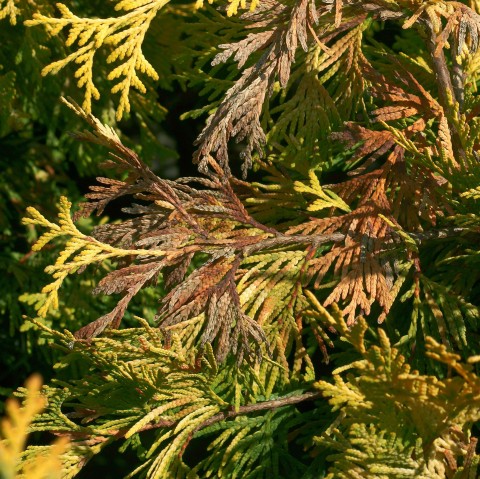TDI Blog
Why Are Your Plants Dying?
This question gets asked frequently. While there are many factors, the following covers the most common instances that can cause plant loss in the landscape. To start, environmental factors are usually the first issues to cover or rule out as possible causes. One issue may be too much water. This can be from extended periods of rain, the plant being too close to a down spout or gutters, or being planted in an area that doesn't drain water properly; or, the issue may simply be over-watering. The signs of a plant getting too much water are very similar to the signs of plants affected by a lack of proper water, or not enough water. Plants that do not get enough water can show signs of dying quickly, especially for new plantings that have not yet established good root systems. Established landscape plantings can get through dry periods unless extreme heat and drought conditions are not met with a plan of watering during those stretches of dry weather.
Planting shade plants in full-sun, or planting full-sun plants in the shade, can cause issues as well. Typically, plants from nurseries come with planting guides that indicate if your plant desires shade or full-sun planting. Most nurseries will also have personnel that can recommend types of plants that will thrive in either situation.
In considering container-grown plants, observe if the plant has become root-bound in the container. This happens when plants growing in containers for a long period of time start to grow new roots and cannot expand because of the walls of the container. The new root growth starts growing around the root and soil ball of the plant. Then, when transferred to the installation spot, the new root growth continues to grow around the root ball instead of expanding. Later, this can turn into a girdling root that constricts the cambium layer of the plant from transferring water and nutrients from the roots to the leaves and stems. Once the plant has been deprived of water and nutrients over time, it will begin to decline and eventually die.
Another installation problem can be caused by planting too deep. Plants should always be planted with soil not exceeding the crown of the plant. When this happens, areas of the stem and plant that are covered by too much soil stay too moist and can lead to crown rot. This usually brings on issues with fungal diseases as well. Sometimes, transplant shock can be the problem. This happens when plants cannot become acclimated to the new planting conditions. This occurs most often with plants that have just been installed, and never adjusted to the new soil structure or irrigation practices soon after planting.
With all of these issues, secondary issues become apparent due to the plant being distressed. That's when insects and diseases can infest which leads to a quicker decline in plant health. If unsure of where, when, or how to install plants, always consult a professional from a nursery. Taking photos of the area of conditions where installation of new plantings is desired can also be beneficial.
When you subscribe to the blog, we will send you an e-mail when there are new updates on the site so you wouldn't miss them.





Comments